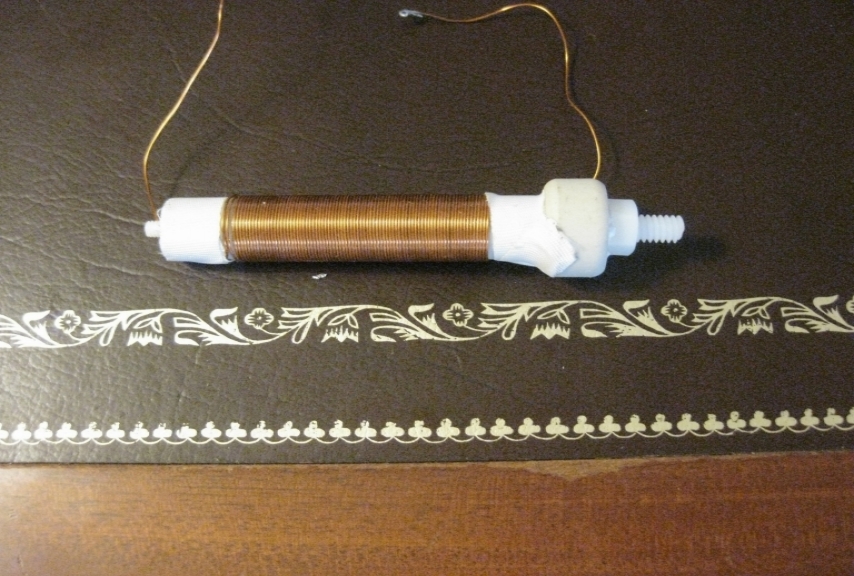RF Chokes

235uH RFchoke. This choke uses a powder core to increase the permeability, permitting a shorter wire length to wind the coil. The length of the wire used is the primary contributor to the placement of the serial resonant points. The strongest occur at the frequency where the length of the wire is near 1/2 Lambda. It is caused by the distributed properties of the wire simulating a 1/2 wl wire shorted to ground by the bypass to ground capacitor. The choke must be designed to move the SRF activity out of the frequencies that are to be used.
The properties of the above choke are; 235uH and no SRF activity from 3.5 to 30MHz alowing the use of any frequency.

This choke is 49uH and first SRF is at 30.5 MHz.

Hallicrafters SR-2000 Plate choke. Wire size #29, 154uH, SRF 18 and 33MHz.

235uH and SRF activity 12,16,22,27,31 Very sensitive to other objects.

This technique uses the ground wire shorted to the probe. Simply connect the choke to a signal generator and sweep until an SRF null is sensed, then move the sense wire over the winding. It is largely non-invasive using current sensing. The first SRF found in an RF choke will will look like a split T but is actually a 1/2wl wire shorted to ground. The center will be a voltage max and the ends current peaks. If you lengthen the wire to 1wl, you will find two voltage peaks with the center and ends current peaks. When objects are placed near the area of a voltage peak the SRF frequency will vary significantly. Using chokes that have no SRF exposure are largely insensitive to proximity.